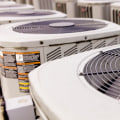When it comes to replacing an air conditioning (AC) unit, there are certain regulations and codes that must be followed in order to ensure the safety of the system. The first step is to check the contractor's license to make sure they are qualified for the job. It is also important to be aware of HVAC codes, regulations, and requirements. The Environmental Protection Agency (EPA) has regulations that allow owners of existing HCFC-22 home air conditioners to replace their condensing unit with a new one if it breaks or is damaged.
However, these HCFC-22 condensing units must meet regional efficiency standards when tested according to the Department of Energy (DOE) test procedure. In cases where an old system lacks a disconnect box, security codes require that a new one be installed along with the new air conditioner. There are specific installation guidelines for properly sizing and wiring the disconnection. If you are planning a major home improvement, it is important to look into local building codes and regulations before beginning the project.
These rules can be complex and cover structure, electrical wiring, plumbing, and air conditioning installations. Rule books can exceed 1,000 pages and are updated frequently, so even if you built your own house and studied the law thoroughly a few decades ago, there may be new rules that you are not aware of. Good air conditioning companies replace the disconnect and the whip when replacing an air conditioner in order to ensure the safety of the system.


